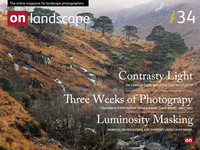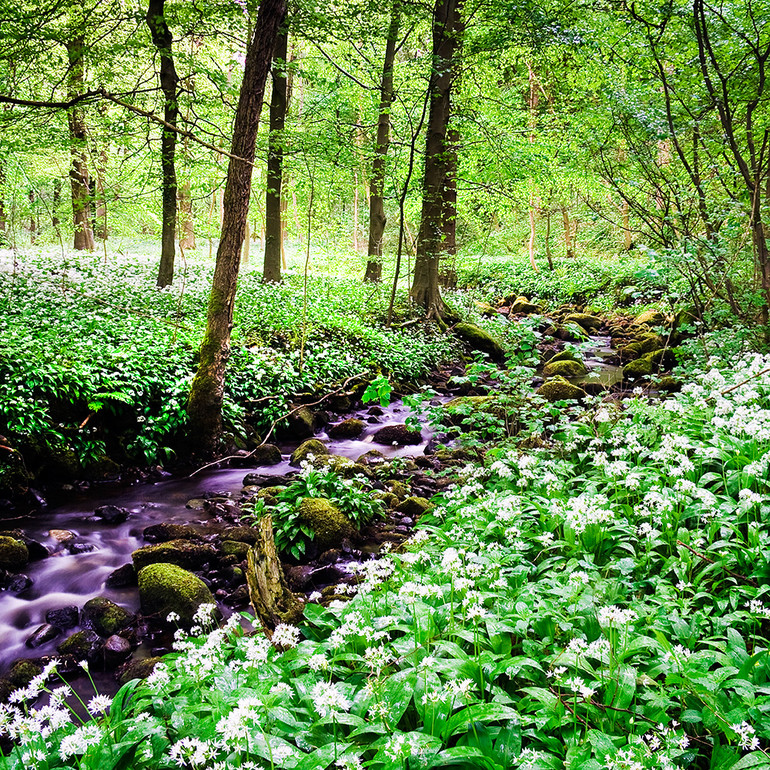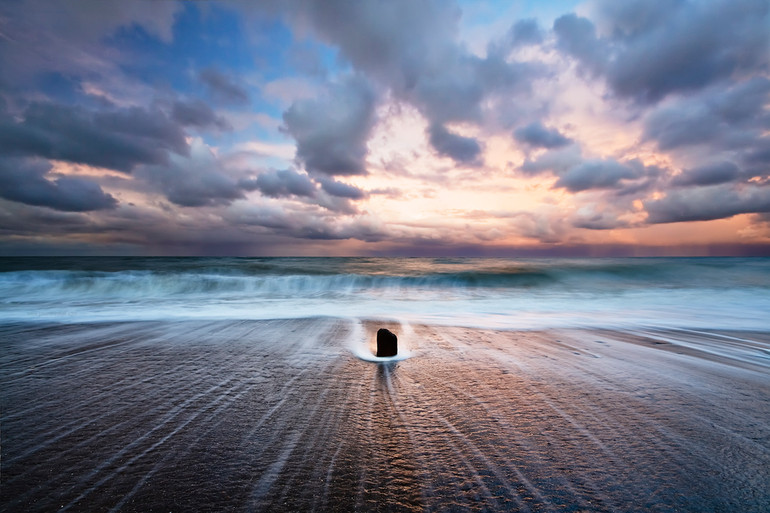Featured photographer

Tim Parkin
Amateur Photographer who plays with big cameras and film when in between digital photographs.

Jason Theaker
Jason is a landscape photographer, workshop leader, animation lecture, and the consistently pitiable member of the band, Elysian!
Jason Theaker was one of the first photographers I saw on flickr some time ago now and his regular photo uploads with their associated essays, discussing his thinking on photography, gathered him many followers. He lives and works within the Leeds/Bradford area and most of his photographs are created either around the Yorkshire area, quite often a short distance from home, or down in Cornwall where he spends regular family holidays and has lead a couple of workshops with various photographers. Take it away Jason.. 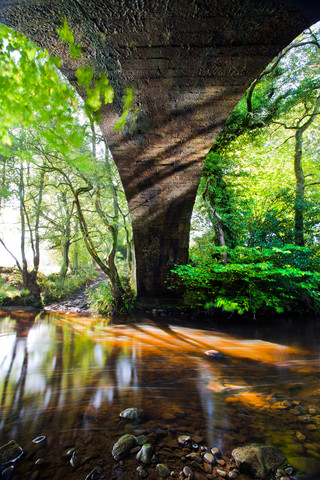
In most photographers’ lives there are 'epiphanic’ moments where things become clear, or new directions are formed. What were your two main moments and how did they change your photography?
When my son was born 12 years ago, we bought a digital camera to record the memories. Up until that point I had used film, so the freedom of instant feedback coupled with next to no cost in the production, gave me the freedom to explore a greater range of subjects. It stimulated a kind of experimentation development cycle that enabled me to critically evaluate, ‘literally in the field’ and pushed me forward. I found the type of subjects I began to explore opened up and I was like a kid in a sweet shop, eyes wide open with possibilities!
At about the same time and whilst our kids were still very little (and would tolerate being in backpacks), we use to head out to the Yorkshire Dales for long country walks. Yes we had the obligatory memory shots of us all in front of waterfalls, vistas and humorous shots of the children, but I found my camera lens irresistibly drawn towards streams, walls, forests, mosses, fungi, than to shots of the family. This wasn’t unusual behaviour, (well….) because as an art student many years earlier I use to spend hours in nature with my old Pentax ME Super and then print them up in our makeshift attic darkroom at home.
This antisocial behaviour coincided with my first encounter with the internet, more specifically blogging, which truly stimulated my desire to progress and gave me a purpose to explore, experiment and develop. I had found a new audience, one that offered immediate feedback and I found the social elements it offered motivating. I could now not only speak to kindred sprits, but learn from them, be inspired, and find justification for spoiling my wife’s walks!
 Tell me about why you love landscape photography? A little background on what your first passions were, what you studied and what job you ended up doing
Tell me about why you love landscape photography? A little background on what your first passions were, what you studied and what job you ended up doing
I love landscape photography because it combines everything I feel so passionate about. I could go on and write an entire article about just this question, but if I try and summarise; the profound love of nature is up there at the top. I feel totally at one with myself when I’m immersed in nature, time drifts and there is no other place I would wish to be, it's truly a meditative experience. I cite my childhood as the catalyst to this feeling. I use to spend many happy hours in forests, swimming in rivers, damming streams, making dens and adventuring. The freedom I was lucky enough to have as a child and the subsequent desire to escape into it remains with me still.
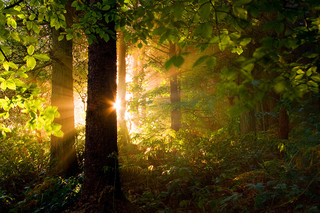 The other side to this question comes from my desire to be creative. Again an essay in itself, but I have this profound need to engage with what I see and find ways to create. I’m sure it’s an evolutionary trait, but for me it was, (and is) profound. I use to make my own cameras from bits of broken ones that the college was throwing out and I even made my own pinhole movie camera out of 12 toilet roll cardboard tubes and made a time-lapse from them in Otley town centre! College for me was a passionate and truly inspirational time and I embraced everything that I was exposed to with open arms. I was lucky that the people I met helped fuel this excitement and my interest widened to encapsulate set construction, characters, lighting, drawing, painting, music and editing. Animation brought everything I was interested in together and the sky was the limit to what my imagination could dream up.
The other side to this question comes from my desire to be creative. Again an essay in itself, but I have this profound need to engage with what I see and find ways to create. I’m sure it’s an evolutionary trait, but for me it was, (and is) profound. I use to make my own cameras from bits of broken ones that the college was throwing out and I even made my own pinhole movie camera out of 12 toilet roll cardboard tubes and made a time-lapse from them in Otley town centre! College for me was a passionate and truly inspirational time and I embraced everything that I was exposed to with open arms. I was lucky that the people I met helped fuel this excitement and my interest widened to encapsulate set construction, characters, lighting, drawing, painting, music and editing. Animation brought everything I was interested in together and the sky was the limit to what my imagination could dream up.
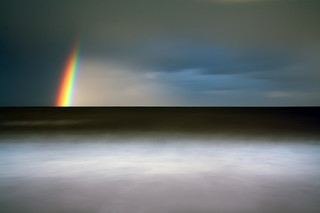 After graduating with an animation degree I pursued a career in stop motion and worked on projects such as Mars Attacks, Chicken Run, and dare I say it Bob the Builder…I was following my eagerness to create, but my photography fell slightly by the wayside in this period. I was fuelling my creativity with other things…
After graduating with an animation degree I pursued a career in stop motion and worked on projects such as Mars Attacks, Chicken Run, and dare I say it Bob the Builder…I was following my eagerness to create, but my photography fell slightly by the wayside in this period. I was fuelling my creativity with other things…
I went even further away from photography when I decided to move into computer graphics and took a job in a games company as a modeller and animator. I loved the work, but I was now in an office for 9 hours a day. Then as I’ve already mentioned it was revitalised again when I had children…
After a few years working as a computer artist we decided to move back to Yorkshire. I took this opportunity to change direction again and decided to give teaching a go. I loved the crit sessions I had with colleges in the CG studio and had always wanted to spend more time with people discussing interesting ideas. I’d also found my time studying inspirational and wanted to see if I could facilitate this in others. After a decade working in education I would like to think that I have helped in part to catalyse that motivation in others, that I found so very beneficial.
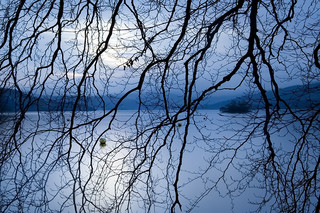 You work around film animation in its various forms, do the skills you have learnt transfer into your photography at all?
You work around film animation in its various forms, do the skills you have learnt transfer into your photography at all?
In a word yes. Animation as a moving image uses all the same principles of stills photography, after all animation is 25 still images a second. When I first got into animation, I used a 16mm film camera (Bolex) and began by experimenting with pixilation, (natural light animation). I can remember taking it up into the Dales and making time lapses of natural vistas. It was an extension of the stills photography I was already doing at the time. I remember loving how I could see different versions of reality by introducing photographic experimentation. It was kind of like a new toy that gave me new ways to visualise nature.
Moving this question to today, much of my work is inside the computer. But those key skills of composition, subject choices, movement, appeal, colour (I could go on), are still very relevant. Then there are the technical elements which are replicated in full with CG virtual cameras, (sharpness, noise, f stop, and shutter speed and lens choices) which make them both very relevant to each other and you don’t even have to worry about a massive backpack!
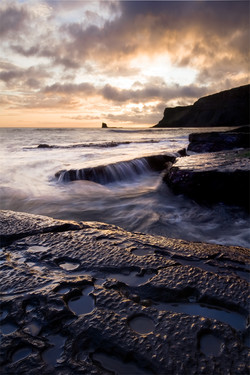 What animated films would you recommend our readership would enjoy or learn from?
What animated films would you recommend our readership would enjoy or learn from?
Early on I loved the visual splendour of directors such as Peter Greenaway, David Anderson and the Brothers Quay, but now I just love the work of studios such as Pixar / DreamWorks, for their story and characterisation, Studio Ghibli for its amazing stories of innocence, tree sprits, and superbly crafted characters. I also feel inspired by the power of programs such as Maya After Effects and Photoshop to generate whatever your imagination can dream up. I see these software advances a mere tools that enable you to explore the recesses of your imagination. Not unlike a camera, it’s a tool that enables you to work with it to produce something of value.
Your role is also an educator and you lead your own photographic workshops - do you find you learn as much as you teach in both your business and hobby?
I love to see people develop. It’s the fundamental reason I’m in education, as both a lecturer in animation and as you point out delivering landscape photographic workshops. I feel honoured to be part of the development process in others. To be able to catalyse inspiration and passion in others, is a symbiotic experience that energises rewards, and it’s truly a privilege to be a part of.
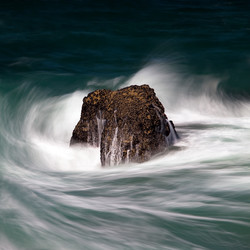 There is a significant difference between my two roles as a lecturer at Bradford University and the workshops I take out. The first is bound up with academic objectives, grading criteria, lectures, and an entirely different learning philosophy directed towards research and industry. The second not only has an entirely different type of person, but is centred around their individual objectives. I borrowed a coaching tool from my wife who is a life coach and counsellor and ask participants to not only set objectives for the day, but to categorise how committed they are to those objectives. Let me stress, this is optional, as I respect that not everybody wants to go to this level of enquiry, but I find that many do.
There is a significant difference between my two roles as a lecturer at Bradford University and the workshops I take out. The first is bound up with academic objectives, grading criteria, lectures, and an entirely different learning philosophy directed towards research and industry. The second not only has an entirely different type of person, but is centred around their individual objectives. I borrowed a coaching tool from my wife who is a life coach and counsellor and ask participants to not only set objectives for the day, but to categorise how committed they are to those objectives. Let me stress, this is optional, as I respect that not everybody wants to go to this level of enquiry, but I find that many do.
The groups that I take out are small and tend to be people who share a deep passion for landscape photography, so as you can imagine the conversations are fascinating and socially rewarding to be part of and to answer your question, I do feel very energised at the end of each workshop, as I’m sure do the participants because thankfully they keep returning.
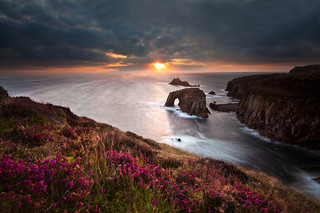 Could you tell us a little about the cameras and lenses you typically take on a trip and how they affect your photography
Could you tell us a little about the cameras and lenses you typically take on a trip and how they affect your photography
I use a Canon 5D2 and the standard 3 L lenses. I tend to favour my mid-range lens, (Canon 24 - 105mm) just because it covers a nice focal range. I also have a Canon 17-40 and 70 - 200 which come out of the bag when I need them, or more accurately when the subject requires.
Sometimes I do limit myself to one lens and I find that when I do this, (mainly with the telephoto), I have interesting creative experiences. It’s almost that if you put hurdles in your way, you find ways to work around them, or see things differently…I have also used a tilt shift (TS-E45mm f/2.8) and macro extension tubes recently. Again this limitation of the prime tilt shift and the macro forces a different reality and you see an entire new way…
As you have probably worked out by now, I tend not to place the technical before the creative, but having borrowed the TS-E45mm f/2.8 from work recently, I was astounded by the quality of colour rendition and crispness of the optics, you certainly do get what you pay for when it comes to glass!
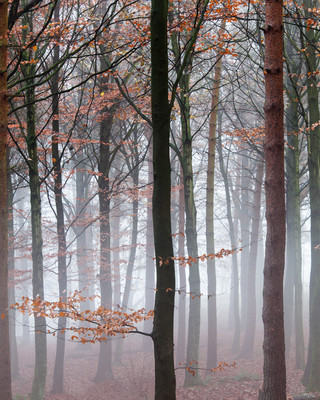 What sort of post processing do you undertake on your pictures? Give me an idea of your workflow...
What sort of post processing do you undertake on your pictures? Give me an idea of your workflow...
I tend to use adobe camera raw to get most of my post processing done. The general curves, levels, white balancing, colour correction, noise removal, dust removal and sharpening. I then take it into Photoshop to blend a couple of versions of the same raw file. I occasionally use bracketed shots when the dynamic range is big, but often spend a long time making sure the blend is as seamless as I can make it, without looking unnatural. The key here is not to let the technology take over and attempt to keep objective. Contrary to many other photographers, I love this process. I often feel like I’m on location again and I see much more detail than when I first made the photograph.
Do you have any particularly techniques you could share with us in your photographic post processing?
I think I’m pretty normal when it comes to post processing. I suppose I’m an advocate of blending exposures over using graduated filters, mainly because I feel you have more control. But I respect that many photographers don’t enjoy the post processing stages and want to reduce the time in front of the computer. Maybe my time as a CG artist has lasting influence towards my enjoyment of this part of the process.
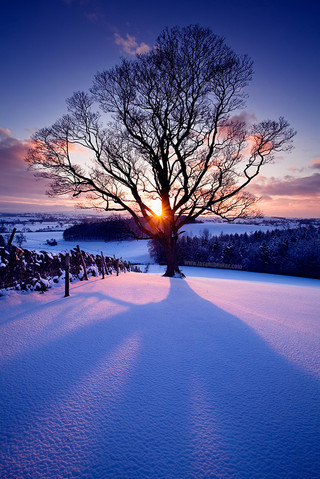 Tell me about the photographers that inspire you most. What books stimulated your interest in photography and who drove you forward, directly or indirectly, as you developed?
Tell me about the photographers that inspire you most. What books stimulated your interest in photography and who drove you forward, directly or indirectly, as you developed?
I couldn’t really pick out particular photographers as being a big influence, I tend to try and synthesise different influences in preference to trying to replicate a particular style, but I respect and enjoy the work of many. Obviously Joe Cornish springs to mind for his use of colour and majestic compositions; also David Ward’s work and philosophy. His books and blog connect with my wish to think more about image making and encourage me to continue to question. Then people like Liam Frankland, Adam Cluterbuck for their utter mastery of composition and the use of colour and subject that Tony Spencer and Sandra Bartocha illuminate. I also enjoy the work of Federico Bebber, but for very different reasons. I have always loved the work of Francis Bacon and Federico visualises this type of work photographically, I would love to have a go, (when I can manage to make some time to do so).
Tell me what your favourite two or three photographs are and a little bit about them.
Choosing my favourite images is very difficult, mainly because it changes dependent on the mood I’m in, that said, I keep coming back to some images and have chosen to hang these three in my house, so I must like them…
This image has very fond memories for me. Ironically it was pouring down with rain, which coupled with a long exposure has given the distance a kind of misty dreamy feel. I love the colour and mood. For me it has positive natural overtones and feels fresh bright and optimistic. It’s the very kind of place I would love to spend a few hours exploring, wandering up the stream seeking out compositions and escaping into the moment. The composition for me has depth and draws me into it. I feel a need to see what is up the stream, what is around the corner, it makes me want to be there every time I look at it.
In addition the story around it never fails to make me chuckle. The image was made one Sunday whilst I was giving my wife a break from our young energy packed overcharged kids. Whilst she peacefully had tea and cakes in the pavilion tearooms at Bolton Abbey, I spent a couple of hours trying to stop my kids from arguing! To put you in the picture, I was leaning over a rusty barbwire fence in horrendous rain, with one eye on the composition and one on the kids, who were now deep in argument on a little bridge about 10 metres to the left of this shot. Yes I know it sounds challenging and you’re probably wondering why I have fond memories of it. Well the scene is so tranquil and I know it wasn’t! Yes it probably says something strange about my dysfunctional psychological state, but the popular idea that landscape photography is a peaceful transcendental pastime, isn’t one that I’m that familiar with, well not here anyway and definitely not with my kids in tow!
This image was made on one of my favourite beaches in Yorkshire. Its midway between Sands End and Whitby. One winter’s evening I had the pleasure of wandering along this stretch of coastline when the evening light began to materialise on the storm clouds in the distance.
For me this shot has depth, I just love foreboding clouds, especially storm clouds packed full of energy. I’ve always loved the power of storms and never tire of being out in them. But the peaceful natural evening light, coupled with the soft subtle leading lines of the receding surf, juxtaposed against the energy, in both the storm and turbulent sea, for me at least work well together. Then there is this groin that forms an anchor point in the composition. I like to think of it being simply there in conceptual defiance, holding on, defending, working to hold back the forces of nature, but naively failing. Again for me it highlights the arrogant human futility of working against nature and the desperate need to work with, embrace and put our trust in it.
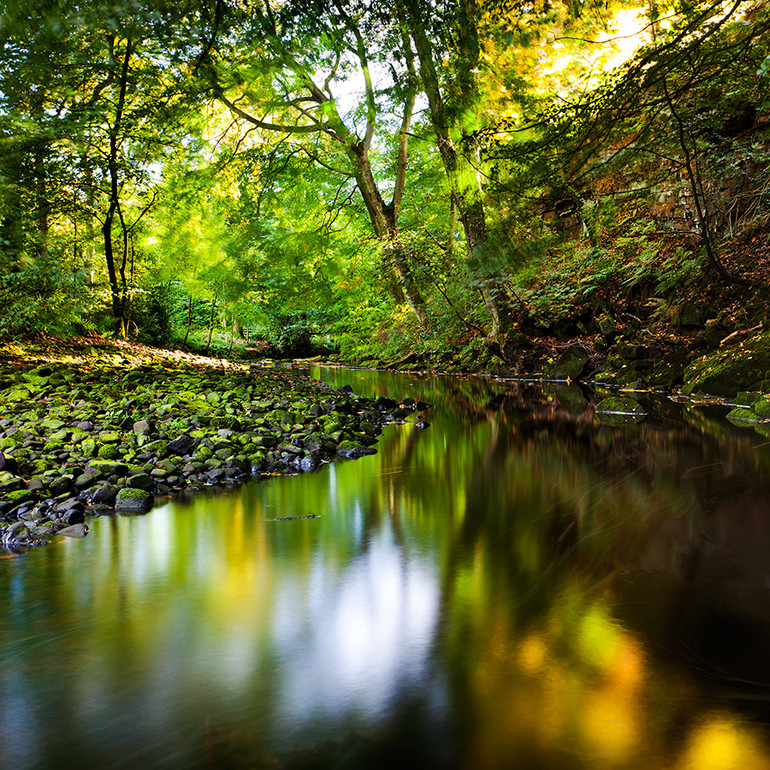
Finally a recent image that I made relatively close to home. This is the stream that meanders between Thruscross and Fewston reservoirs not far from Otley. For me the location has an enclosed protected feel, almost sheltered and encapsulating. The colour of the of late summer and the impending change of seasons are evident and the dappled reflections help to simplify the relatively chaotic woodland vista.
The image is working for me on different levels. Compositionally I like the contrast and texture difference between the soft mirror-like long exposure on the stream, the distorted mixed up reflections that the moving water has created and against the chaotic tangled environment. The stream naturally draws you in and is a convenient leading line into the image, but again it’s the kind of place I could spend hours slipping about in. I think I’m naturally inquisitive, (ok ok…nosey) and often find myself wanting to see what is around the next corner and this type of image stimulates the desire to seek out.
The image also helps me feel calm. I’m sure the subject is a large part in this and the colours complement each other pleasingly.
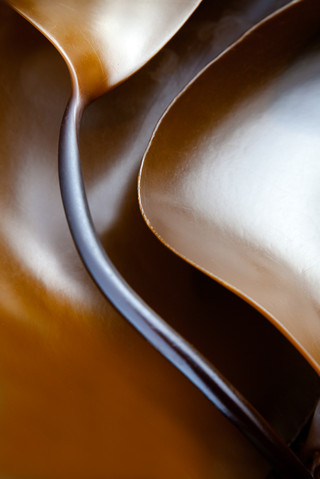 If you were told you couldn’t do anything art/photography related for a week, what would you end up doing (i.e. Do you have a hobby other than photography..)
If you were told you couldn’t do anything art/photography related for a week, what would you end up doing (i.e. Do you have a hobby other than photography..)
Well if I were at home I would either, put some time in on the drums, (I have played for years, but recently signed up to some lessons to learn how to read music), or head out for lots of ‘long’ walks. If I could head further afield, I would be hill walking or body boarding…
What sorts of things do you think might challenge you in the future or do you have any photographs or styles that you want to investigate? Where do you see your photography going in terms of subject and style?
I have a couple of open-ended projects that as yet haven’t yet materialised into what I would like them to be. The first is centred around a patch of woodland that I use to play in as a child. I’m attempting to visualise this area with no concrete objective, other than to use my adventurous childhood memories as a starting point to connect the past with the present. I have many happy memories of the area, (making dens, climbing rocks / trees, camping, even finding some Victorian coins with a metal detector) and I want to in some way translate them into a study of the location with a sense of sentimental awe.
 The second project is exploring how light reflects and refracts through moving water. Now this theme traverses many of my water subjects, but this project is specifically based on rivers and streams, mainly because of the dappled diffuse light and varying degrees of colour offered up by changing conditions. I’m fascinated by how complex this can be and find stimulation in the murky depths and unusual forms that can be uncovered. It is not my wish to attempt to represent any given location, but to simplify and abstract. Oh yes, I’m also irresistibly drawn to the subject and find hours pass by whilst meandering their water courses.
The second project is exploring how light reflects and refracts through moving water. Now this theme traverses many of my water subjects, but this project is specifically based on rivers and streams, mainly because of the dappled diffuse light and varying degrees of colour offered up by changing conditions. I’m fascinated by how complex this can be and find stimulation in the murky depths and unusual forms that can be uncovered. It is not my wish to attempt to represent any given location, but to simplify and abstract. Oh yes, I’m also irresistibly drawn to the subject and find hours pass by whilst meandering their water courses.
Who do you think we should feature as our next photographer?
Adam Clutterbuck. You might be surprised with that choice because Adam is fundamentally a black and white photographer, but I find his compositions magical! For me at least there are always elements of subtle tension in his work and I would love to know what he thinks about his work…
Thanks to Jason for spending the time answering our questions - I'm sure he'd be happy to field any more from readers if the have any as well. More of Jason's photographs can be seen below or at jasontheaker.com or at Flickr.

